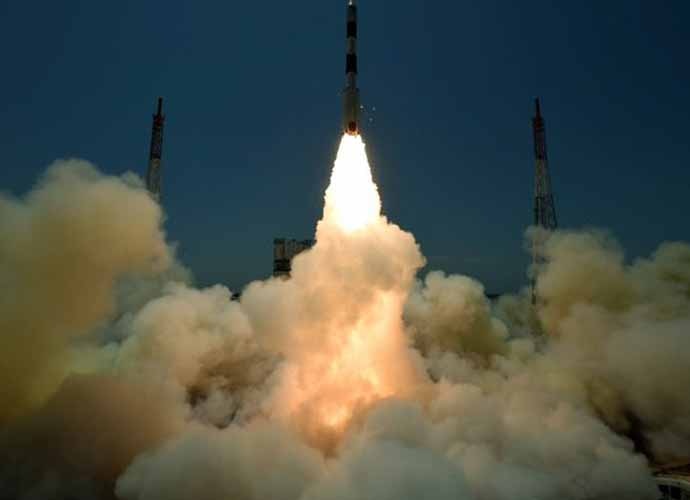RLV-TD is a baby step, working space plane is still miles away for ISRO

Every time the Indian space agency, ISRO executes a mission successfully it attracts a lot of attention, particularly after its highly publicised missions to the moon and the Mars.
The maiden launch of a Reusable Launch Vehicle from the spaceport in Sriharikota on Monday morning was no exception, despite it being only an experimental flight of a much scaled down version.
As is clear from its name, RLV-TD (reusable launch vehicle - technology demonstrator) is a part of the experiment to develop a space plane. The size of the vehicle was about one sixth of what the full-scale RLV could be.
The RLV-TD splashed down into the Bay of Bengal after being in flight for almost 13 minutes, as planned, and was not recovered for reuse. The technologies needed for landing, recovering and reuse are still to be developed.
Moreover, ISRO does not yet have a runway where space planes could land safely. So, any comparison with space shuttle is still farfetched. It is still an R&D project for ISRO.
The HEX-1 experiment was designed to test certain technical parameters - hypersonic aero-thermo dynamic characters of the winged body, re-entry and autonomous mission management technologies.
After reaching peak altitude of 65km, RLV-TD began to descend. A crucial point was atmospheric re-entry at around Mach 5 (five times the speed of sound). The vehicle's navigation, guidance and control system steered it during this phase for safe descent.
The Thermal Protection System (TPS) worked well during the re-entry and the vehicle glided down to the defined landing spot, at a point 450km from Sriharikota. The whole journey was tracked from ground stations at Sriharikota and a ship-borne terminal.
 |
| PSLV-C33 successfully launched India's seventh navigation satellite IRNSS-1G on April 28, 2016. (ISRO) |
The list of technologies needed to develop a working space plane is long. These technologies will be developed in phases through a series of experimental flights. The HEX-1 will be followed by the landing experiment (LEX), return flight experiment (REX) and scramjet propulsion experiment (SPEX).
ISRO has not given any timeline to achieve the target, but analysts feel that it could take 10-15 years to develop a working reusable vehicle capable of placing satellites in different orbits - which is the ultimate objective of the exercise.
One can think of RLV as a competitor to ISRO's workhorse rocket - Polar Satellite Launch Vehicle (PSLV). Rockets like PSLV fall in the category of expendable launch vehicles - these multi-stage rockets burn out as they propel satellites into space. Every time ISRO has to launch a satellite, it has to build a new PSLV. This makes satellite launches costly affair and frequency of launches can't be very high.
In order to reduce launch costs, a reusable launcher can be developed. However, one has to take into account costs of development, experimental flights, recovery as well as refurbishment for reuse.
Then there is competition from commercial launchers like SpaceX, which recently demonstrated sea landing of its reusable rocket. Only after taking into account all these factors we will be able to judge if an RLV is going to be cheaper than a PSLV.
ISRO is thinking big on every front and has been able to deliver despite limited resources. To realise its dream of developing a working space plane for cost-effective satellite launch business, the agency would need government support and assurance of sufficient financial resources.
The agency also needs to develop a long-term plan and priorities. Sub-critical investments in futuristic projects like space plane and manned missions is not the way to go. RLV, originally conceived by APJ Abdul Kalam, has been on the drawing boards for long.
The same is the case with manned space mission which needs huge investment which no government has been able to commit in the past many years. Aerospace industry has to be involved in developing launch vehicles so that regular launches can take place faster and private industry could play a role. ISRO has come a long way and it needs to keep up the momentum.

